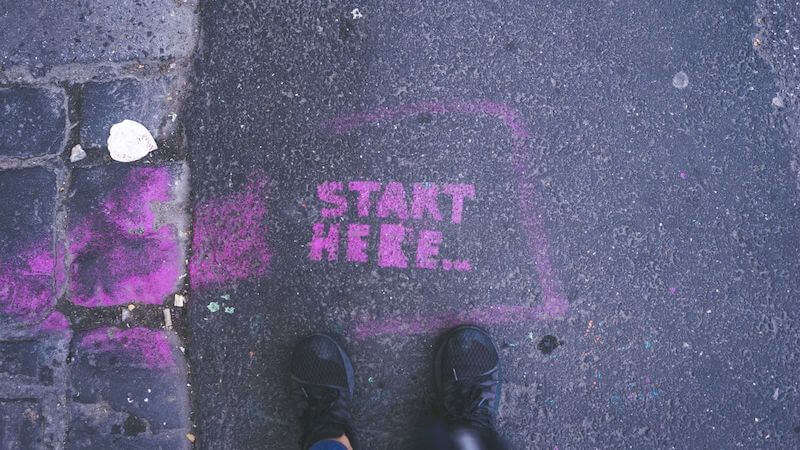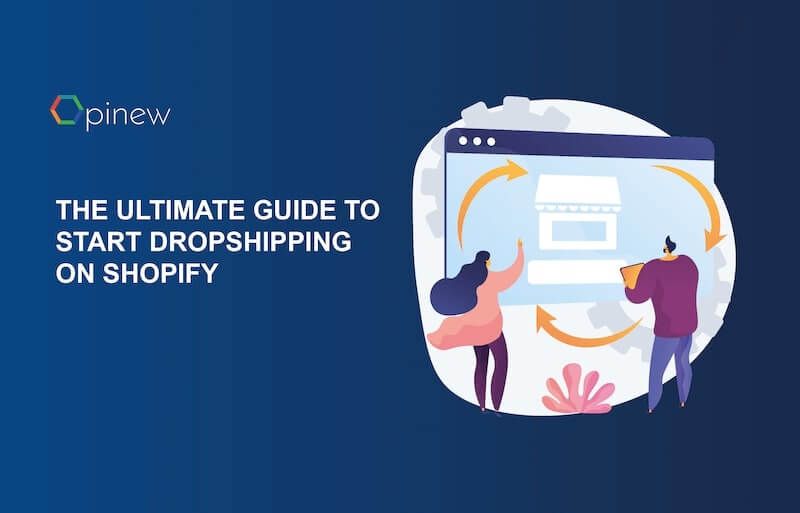
Dropshipping With Shopify - The Ultimate Guide
While some question whether dropshipping is still a relevant business model (in 2023), the truth is that this question gets asked every year and every year the answer remains; yes, dropshipping is alive and well.
Table of Contents
1. Why Dropshipping
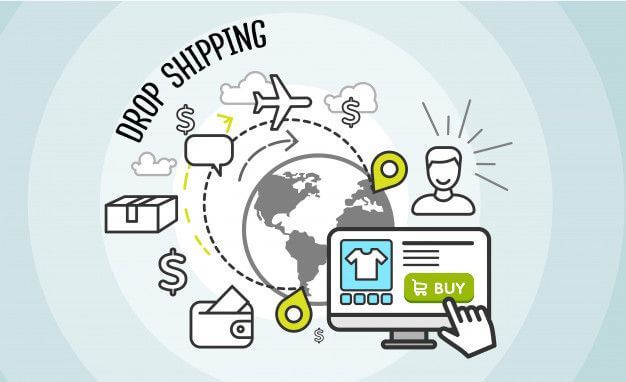
Dropshipping is a business model that allows you to save money, time, and effort specifically on storage, inventory, shipping, and handling. And given that, thanks to sites like WooCommerce, Shopify, AliExpress, and others, it's never been easier to create and operate a dropshipping store, it makes sense that it's as popular as it is.
While some question whether dropshipping is still a relevant business model (in 2023), the truth is that this question gets asked every year and every year the answer remains; yes, dropshipping is alive and well.
That doesn't mean, however, that all dropshipping stores are going to thrive. A lot of stores are failing. That's true. But what is also true is that a lot of those stores were halfhearted efforts that just assumed setting up a store and running a few thoughtless ads would magically turn traffic and sales for their stores.
But driving traffic is tough. And improving your conversion rate is also tough. Both are key if you want your dropshipping store to succeed.
In this post, we'll show you how to do both of these things. But first let's explore a few of the assumptions as to which platform to use and where to dropship from.
2. Why Shopify

Shopify is the most popular choice when it comes to platforms on which to set up your dropshipping store. And there are good reasons for that, the main one being that it's easier to use.
WooCommerce is a great alternative and if you want to explore that option you're more than welcomed to do so, but here, we are assuming that you're not familiar with Wordpress or coding, and you need some basic knowledge of these two things to venture into WooCommerce, which is why a lot of people rather set up their store on Shopify.
That being said, if coding doesn't intimidate you, you could save some money by setting up your store on WooCommerce.
Ultimately that's a personal choice based on your skills and your needs. For now, we're going to assume that you're setting your store on Shopify because that's going to be the case for most of our readers. If you want to learn more about the differences and similarities between Shopify and WooCommerce you can check that out on WebsiteBulderExpert's WooCommerce vs Shopify: Who Comes Out On Top?
3. Why AliExpress

Technically, you can dropship from anywhere. Dropshipping is a concept and you can go about it any way you want. The concept goes like this:
· You find a product and a supplier for that product
· You offer that product at a higher price on your store
· Each time someone makes a purchase on your store, you place an order with your customer's information on your supplier's store (this is an automated process that you really don't need to concern yourself with these days but it's still worth mentioning when detailing how the concept works).
· You get to keep the difference between your supplier's price and the price you set for your store.
So if you wanted to do that from Amazon, that's all well and good but consider this: why shouldn't your customer just turn to Amazon?
So now you get an idea as to what kind of products and from which suppliers is best to drop ship from: products that are considerably cheaper than their alternatives, which are found on marketplaces with both good and bad suppliers, bring your work to ensure you find a good one for your customers and thus, providing value.
See, by finding a good supplier you're saving your customers from any potential risk.
That's not the only value you provide, of course, you're also in charge of driving traffic, developing good copy, and choosing a great theme so that your store has a good conversion rate.
But the fact remains that consumers are way more comfortable buying directly from Amazon than from AliExpress. And it's not just because of Amazon's excellent customer service, delivery times, and overall trustworthiness, you also have to account that originally AliExpress set out to sell business to business rather than directly to consumers, so by design, it's a marketplace better suited for dropshipping than say... Amazon, eBay, or others.
So yeah, that means that some, if not most customers, might be more likely to purchase from you than directly from AliExpress. And that's why you need to make sure to choose a reliable supplier since you'll have to respond and offer customer service for any mistakes they might make for orders coming from your store.
To recap, we're assuming then that you are setting your store on Shopify and you're dropshipping from AliExpress.
4. But How Do I Find the Best Products and Suppliers?

a) How to Find a Winning Product - Product Research
Product research often calls for intuition. You need to figure out which product or collection of products you can offer to a target market that will be interested in them - most likely a niche market. And curating the products you offer under a common theme, maybe you know of an awesome cutting board and a few other kitchen devices that just make cooking so much easier, again this is just a thought, an example, whatever it is, finding good products that you think you'd be good at selling is very important.
Part of your product research should include whether or not this product (or products like it) is easier to get via other marketplaces or stores that your potential customers are more likely to explore. Also, how many other dropshipping stores are out there offering this product? Consider that if a lot of other stores are offering it, the market for that particular product might be over-saturated.
Many people equate that to saying dropshipping is over-saturated, but by doing that they are either failing to see the world of products available or arguing in bad faith.
Product research is an essential part of the work if you're looking to start a dropshipping business. And if you're not willing to take a dive and find something few people or nobody else is offering, then you're bound to fail. Lazy product research is the worst way to start a dropshipping business.
Another thing to consider is whether or not the product delivers what's expected of it. You may have seen a product you think is great but you've never tried it and you don't bother to. And so you add it to your store and customers also think it looks good and they make purchases and try it and end up disappointed. That's gonna hurt you in the way of bad reviews and also customers who won't be returning or trust any of your other products.
So know what you're selling. Know that it is good and it works as expected. Those are basics. Of course, that alone won't ensure that your product sells, like we said before, intuition also comes into play. There's no exact formula to determine how appealing a product is or how appealing you can make it out to be, because that's the other part of the equation, on the one side there's how appealing the product inherently is, but you're also writing a product page for it right? Your ability to sell that particular product comes into play. So you should be good at recognizing that. It's not just about finding a good product you have to find a good product that you can sell well.
This is what we call "finding a winning product", and you'll get better at it with practice
b) How Do I Find a Good Supplier on AliExpress
There are a lot of things to consider when evaluating whether a supplier is right for your store and ultimately for your customers.
i. Location - Where is this supplier shipping from? Where are your customers going to be buying from? The further the distance, the longer the delivery times.
That doesn't mean that you shouldn't pick a supplier who is very far away from your customers, but it does mean that you have to warn your customers about the amount of time they'll have to wait for the product.
A good customer experience isn't necessarily one that delivers the fastest, but one that matches customer's expectations. For example, if I decide to buy something from a particular store because they offer that product for a cheaper price than somewhere else but they make it clear that shipping may take up to two or three months and I decided to purchase from them, I won't get mad about waiting two or three months for the product to arrive. I expected that. I factored that in when I decided to make a purchase.
If you want to learn more about finding suppliers in the US specifically, check out Debutify's "How To Find US Suppliers For Your Dropshipping Store".
ii. Customer Reviews - A great way for assessing whether or not a particular supplier is good at fulfilling orders is by looking at their customer reviews.
Another reason why this is helpful is that once you import that product to your Shopify store, with Opinew, you'll be able to import their reviews as well. So think about it this way: at least at the start (importing reviews shouldn't be your only source of reviews, rather a way to jump-start your store's efforts towards creating social proof), their reviews are your reviews.
iii. Make a Test Purchase - One of the best ways to figure out how good or bad something is, is to try it yourself. And while you're not going to be making purchases from all of the suppliers you find, you can purchase from a few of them, the ones that look promising, and figure out which one you think is best.
Of course, because you had a good enough customer experience doesn't mean that that's going to be the case for all your customers. A single experience cannot be considered truly representative but it is still a valuable input.
5. Setting up your Shopify store
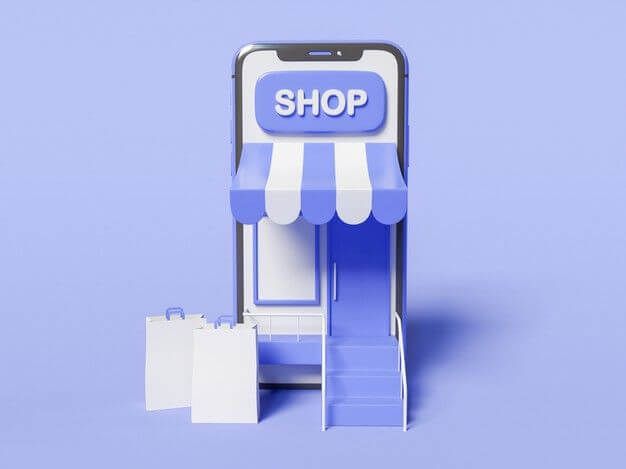
You've selected the products you want to sell from the suppliers who you thought were right for your store and your customers. You're ready to set up your Shopify store. So let's explore the easiest way to make that happen.
a) Importing Products and Reviews - How Oberlo and Opinew can work together to make things easy for you
Oberlo is an app developed by Shopify that lets you import products from AliExpress. It's easy to use and it's free (there are premium plans available but that's to access special content and dropshipping courses, you can import products for free)
So log in or create a Shopify account if you haven't done that and install the Oberlo app to your store via Shopify's App Store.
Install the Oberlo Chrome Extension, find the products you want to import on AliExpress and use the Chrome extension to import the products to your Shopify store.
Install the Opinew App to your store now if you want to import reviews from the products you've imported. Opinew's plans start at $9.99 a month, by the way, considering what they offer and the quality of their customer support, it's really a bang for your buck.
To import reviews, install Opinew's Chrome Extension and go to your Oberlo App dashboard. There click on my products and use the Chrome extension to do a bulk import (automatically import reviews for all the products you've added).
If all this sounds fairly simple it's because it is. And that's what we meant at the beginning of this article when we said "It's never been easier". While it's true that there are cheaper options that require more programming skills or at least some degree of familiarity with coding, with the apps and integrations available today, anyone can import products and reviews quickly and easily.
6. Driving Traffic - Advertising Channels and Strategies for your Shopify Store

Driving traffic to your store is one of the constant struggles of a dropshipping business. This is done through advertising. Let's explore a few concepts, the main advertising channels, and strategies to drive traffic to your store.
a) A/B Testing for your ads
A/B testing is a concept that is helpful when trying to optimize many things, in this case, it's ads, but it can also be helpful when dealing with your product pages, for example.
The idea is to test roughly the same ad, with one key difference (or with as few variables as possible). That's because it's a clear way to determine whether A or B is working better towards what you want. If you have more than one variable, it will be hard to say whether the difference can be attributed to either one or the other. So keep your A/B testing limited this way, only test one variable at a time and gradually optimize for the best-performing ads.
b) Email Marketing
A lot of people think email marketing is useless, "who clicks on these things?"
Actually, a lot of people, which is why it's still a thing. If it wasn't because it's an effective way to promote businesses, it would've fallen out of use already.
Email marketing is particularly useful for:
· Abandoned Checkouts
· Review Requests
· Special Offers (like a Summer Sale, for example)
· Newsletter (if you've got or are trying to build an engaged community)
· Order Updates (order confirmation, you're product has been shipped, tracking information, etc.)
d) Facebook and Instagram
Advertising on Facebook and Instagram remains a powerful way to promote your business. There are a few good reasons for that:
· Engaged users
· Offer valuable data about your ad's performance
· Precise targeting parameters
e) TikTok
Reaching a younger audience can be challenging. If that's what you're looking for, advertising on TikTok might be the perfect channel for you to focus your advertising on. And it's really easy too, if you want to learn more about this you can check out Shopify's "Dancing to a new beat: Shopify brings commerce to TikTok".
c) Targeting and Re-targeting
Targeting can be tricky. To figure out who you want to reach you may have to try and miss a few times. Of course, you've got an idea of who your target audience might be, but sometimes stepping out of your initial assumptions can help you find a market that you didn't know was there.
Re-targeting means you've targeted an audience who has already seen one of your ads. Doing that can help you reach an audience that is interested, yet not convinced. Take it as an opportunity to focus on other product attributes than you did on your first ad, or maybe even offer a discount.
7. Improving Your Conversion Rate - Optimizing your Shopify Store
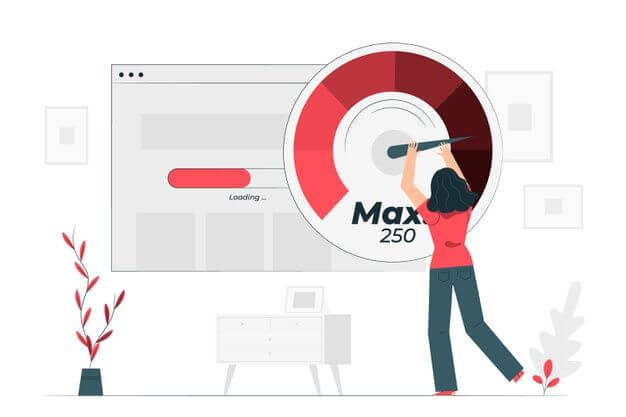
Improving your conversion rate is a never-ending endeavour. Your page can always get better. To do that you need to consider the following things:
a) Through which device are your potential customers viewing your page?
Try getting your hands on the most popular device used by your audience to view your store, so that you can make adjustments to improve the way your store looks and feels to your biggest audience.
b) A/B Testing for your product pages
Run A/B Tests for your product pages to figure out which copy, call to action, video, image, or structure is the best performing one. Remember to limit yourself to a single variable at a time and gradually build on that with the next test.
c) Collecting more data
There are several apps out there that can help you collect more data, very valuable data. For example, Mouseflow or Hotjar can help you view heat maps (where the audience's attention is on any given page) which can help you identify whether or not something is getting in the way of conversions. You can also track a user's movement through their whole session at your store.
d) Analyzing data and making decisions
Data is meaningless if you don't analyze it, break it down, and make decisions with it. So do look at how your product pages are performing, where the audience's attention is being directed, where you want it to go, whether or not your call to action works, etc.
This is a great way to figure out what to do A/B testing for next instead of blindly trying different things.
Enough reading, it's time to get out there and do it!
We hope we answered most of your questions and if you've got any remaining questions be sure to contact us, we'd love to hear from you.
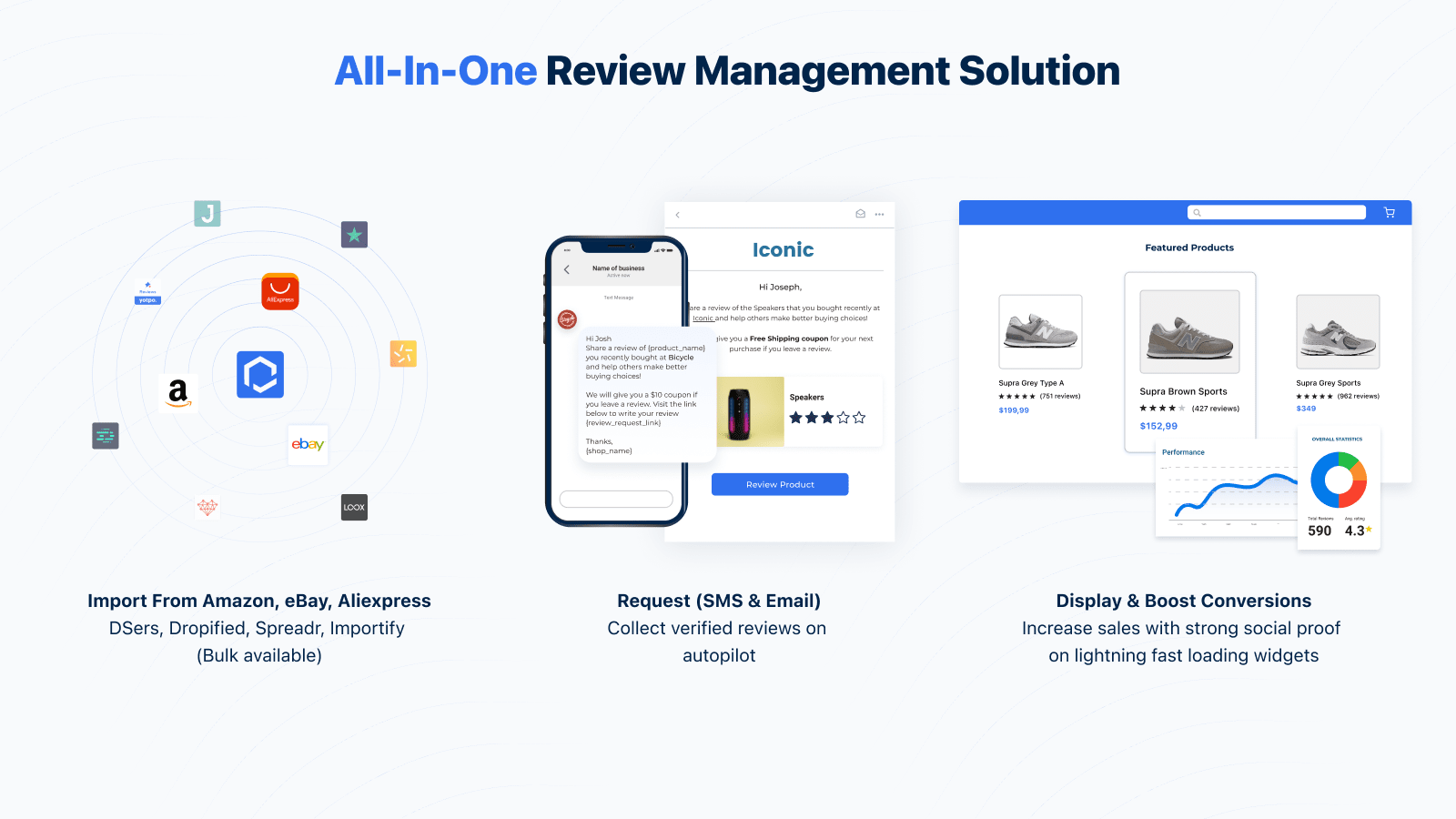
Get started for free
All-in-one review management solution for Shopify stores looking to build trust and increase conversions.
Opinew Blog Newsletter
Join the newsletter to receive the latest updates in your inbox.


